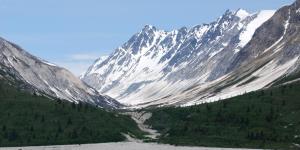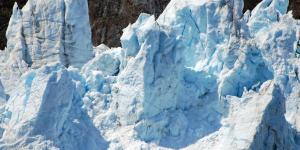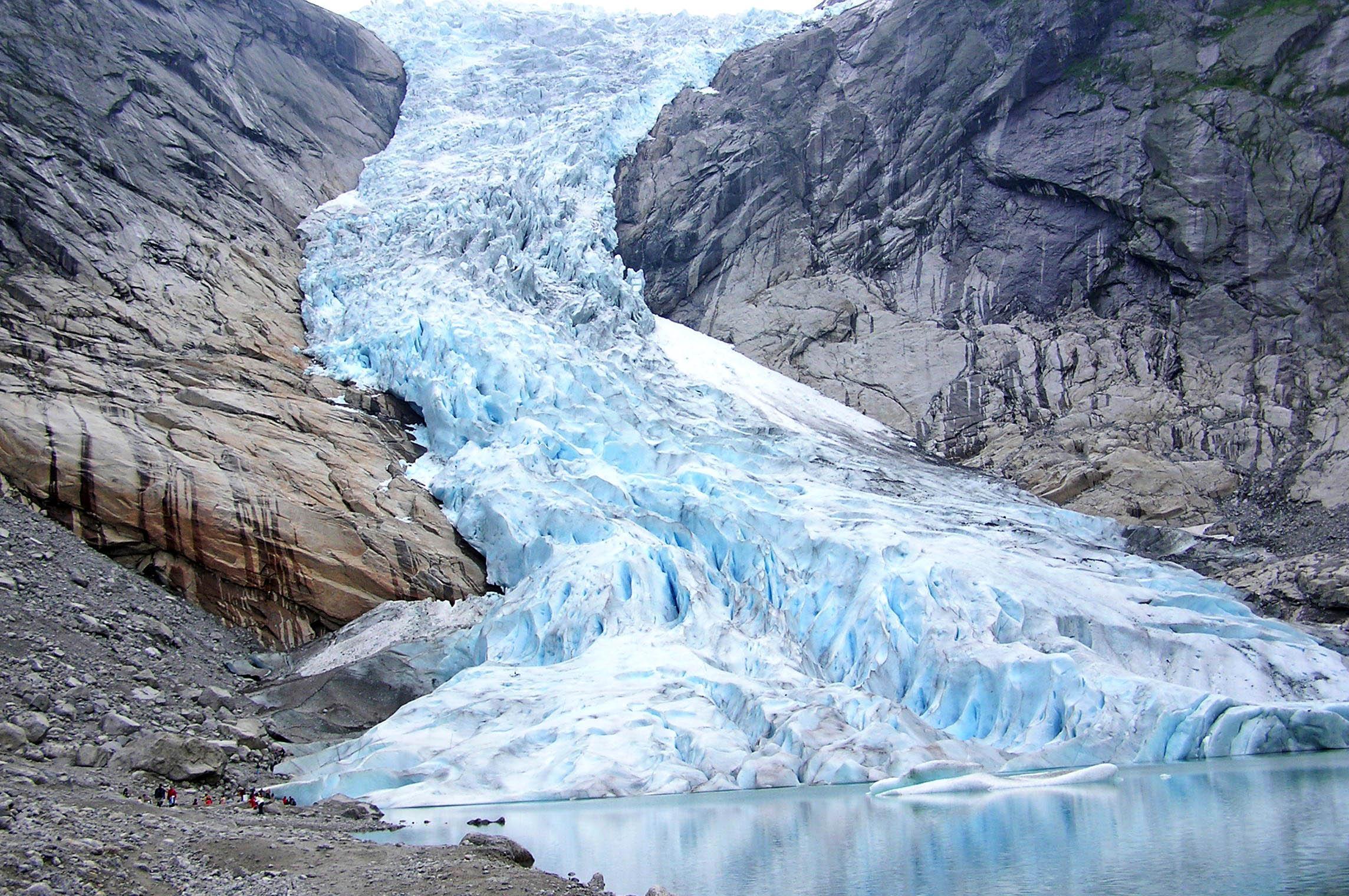What Is Glacial Erosion?


Glacial erosion – a relentless geological process – has shaped the land across vast swathes of our planet. From the Himalayas' towering peaks to Patagonia's expansive plains, its signature remains etched in U-shaped valleys, polished rock surfaces, and dramatic glacial landforms. Understanding this powerful dynamic is not just an exercise in geological fascination; it holds profound implications for water resources, ecosystems, and even our changing climate.
The following article by thedailyECO delves into the intricacies of glacial erosion, shedding light on its definition, underlying causes, diverse types, and the consequential impact of human interactions.
What is the definition of glacial erosion?
Glacial erosion is a geological process driven by the movement of massive ice masses, known as glaciers, which play a crucial role as natural erosive agents.
These glaciers form in regions where the accumulation of winter snow consistently exceeds the amount that melts during the summer. The amassed snow undergoes compaction and recrystallization, eventually transforming into a thick mass of ice, a phenomenon referred to as glaciation.
A distinctive feature of glaciers is their movement, initiated when the ice reaches a thickness of around 50 meters (164 feet). Once this threshold is surpassed, the ice flows uniformly, influenced by factors such as slope and gravity. As the glacier advances, it profoundly shapes the surrounding terrain and displaces rocks in its path. The rocks within the glacier act as abrasive particles, engaging in processes such as tearing, wearing, and polishing the ground through friction.
During the glacial erosion process, the ice can cause rocks to fracture, with fragments infiltrating the resulting cracks, a phenomenon known as gelifraction. The continuous movement of ice over rocks creates characteristic striations in the terrain, forming striated or polished soils.
As the glacier nears the end of its journey, it undergoes an ablation process, melting and transforming into water. In this final stage of glacial erosion, the materials transported by the glacier are deposited, creating a mixture of sediments with angular shapes, varying in size.
Its influence extends far beyond sculpting valleys and peaks, significantly shaping landscapes, influencing drainage patterns, and even impacting global climate through altered albedo.

What is the difference between glacial erosion and deposition?
Although initially appearing as opposing forces, glacial erosion and deposition are, in fact, intricately connected phases within the continuous movement of glacial material. Let's delve deeper into the distinct features defining each process:
Glacial erosion:
Glaciers carve and reshape the landscape as they move. They achieve this by:
- Abrasion: the sheer weight and movement of the glacier grinds down underlying rock, similar to sandpaper.
- Plucking: ice freezes in cracks and crevices, then breaks off rock fragments as it melts, carrying them away.
- Meltwater erosion: water from melting ice sculpts the landscape, carving channels and valleys.
- Landforms: erosion leaves behind distinctive features like U-shaped valleys, cirques (bowl-shaped depressions), and horns (sharp, pointed peaks).
Glacial deposition:
As glaciers move, they carry eroded material (rock fragments, sand, clay) with them. This material is eventually deposited when the glacier stops or melts, forming various landforms:
- Moraines: linear ridges of deposited material found along the sides or edges of glaciers.
- Till: unsorted, heterogeneous mixtures of boulders, gravel, sand, and clay deposited directly by melting glaciers.
- Outwash plains: flat areas formed by meltwater carrying and depositing sediment beyond the glacier's edge.
- Landforms: deposition creates contrasting features like moraines, till plains, and outwash plains, often fertile due to their diverse mix of sediments.
Key differences:
- Action: erosion removes material from the landscape, while deposition adds material to it.
- Landforms: erosional landforms are typically steep and rugged, while depositional landforms are flatter and smoother.
- Timeline: erosion often occurs first as glaciers advance, while deposition typically happens as they retreat or melt.
These processes are interconnected and often occur simultaneously within a glacier's journey. Understanding both erosion and deposition is crucial for appreciating the full impact of glaciers on shaping landscapes.
Journey beyond the dramatic landscapes shaped by glacial ice. Discover how the very forces carving mountains also influence Earth's temperature through a fascinating phenomenon called the albedo effect.
Factors that influence glacial erosion
Glacial erosion is a dynamic process governed by four key factors:
- Glacier velocity: the rate at which a glacier moves directly impacts its erosive power. Faster-moving glaciers exert greater force against the underlying rock, resulting in more rapid erosion. This can be visualized as a fast-flowing glacial river carving deep valleys compared to a sluggish ice sheet leaving minimal traces.
- Ice thickness: thicker glaciers exert greater pressure on the land due to their increased weight.
- Subglacial debris: embedded within the ice itself lie rock fragments of varying sizes and sharpness. These act as abrasive tools, scraping and scouring the bedrock as the glacier advances. The abundance and sharpness of these rock fragments directly influence the rate of erosion, with more and sharper debris accelerating the process.
- Bedrock erodibility: the underlying rock's inherent resistance to erosion plays a crucial role. Softer, weathered rock readily yields to the glacier's abrasive forces, while harder, more resistant rock forms stronger barriers, slowing down the erosion process. Think of clay readily eroding compared to the sturdiness of granite.
Uncover the surprising intersection of geological forces and vibrant microbial communities. Learn how the very processes shaping icy terrain can also give rise to unexpected phenomena like pink snow.
Types of glacial erosion
There are various types of glacial erosion, each contributing to the shaping of landscapes as glaciers move and interact with the underlying terrain. Here are some key types of glacial erosion:
- Abrasion: is the process by which rocks and debris carried by the glacier grind against the underlying bedrock. As the glacier moves, the abrasive action of rock fragments at its base sculpts and polishes the bedrock, leaving characteristic striations and creating a smooth, polished surface.
- Plucking: is the process in which the glacier lifts and removes rock fragments from the underlying bedrock. Meltwater at the base of the glacier can freeze onto rock surfaces, and as the glacier moves, it plucks or tears away rock fragments, transporting them within the glacier.
- Gelifraction: refers to the breaking of rock due to the expansion of freezing water within cracks and joints. Water entering fractures in the rock expands when it freezes, exerting pressure and causing the rock to break into angular fragments. These fragments are then incorporated into the glacier.
- Cirque formation: is the glacial erosion process that creates a bowl-shaped depression, known as a cirque, at the head of a glacier. The glacier erodes the mountainous terrain, forming a hollow where snow and ice accumulate. Over time, this accumulation transforms into a cirque.
- U-shaped valley formation: refers to the modification of a V-shaped valley into a broader, U-shaped valley by glacial erosion. The glacier widens and deepens the pre-existing V-shaped valleys through the combined action of abrasion and plucking, resulting in a characteristic U-shaped cross-section.
- Hanging valleys: are smaller valleys situated above the main glacial valley, often characterized by waterfalls. Tributary glaciers, with less erosive power than the main glacier, leave hanging valleys at their intersections with the main valley. These valleys often have waterfalls where their streams meet the main valley.
Discover how the dramatic landscapes sculpted by glacial erosion become cradles for diverse polar communities. Learn about the intricate interplay between physical dynamics and biological adaptations that sustain life in these extreme environments.

How do people affect glaciers?
Human activities cast a long and complex shadow on glacial landscapes, influencing both their immediate surroundings and the broader climate. Understanding these multifaceted interactions is crucial in recognizing the delicate balance between natural processes and human-induced changes.
As populations expand and seek resources, mountainous regions with glaciers often become sites for infrastructure development. Roads, tourism facilities, and industrial installations, while bringing progress, can disrupt fragile ecosystems. Habitat loss, altered water flow, and noise pollution are some of the unintended consequences, impacting both terrestrial and aquatic life near glaciers.
The demand for natural resources drives human activities like mining and quarrying in glacier-rich areas. These activities not only disturb the landscape but also introduce pollutants into glacial environments. Toxic chemicals and sediments can contaminate the ice, affecting its quality and accelerating melting rates, further fueling the cycle of change.
Human-induced climate change, characterized by rising temperatures, significantly impacts glaciers. These sensitive indicators of climatic variations respond by melting at increasingly rapid rates. The consequences extend beyond glacial retreat, impacting downstream water availability, disrupting ecosystems dependent on meltwater, and altering weather patterns globally.
The melting of large ice sheets, particularly in Antarctica and Greenland, contributes to rising sea levels. Coastal communities, once nestled in relative safety, find themselves increasingly vulnerable. Saltwater intrusion, erosion, and more frequent flooding become the new realities for many, highlighting the far-reaching consequences of glacial retreat on human populations and infrastructure.
Preserving glacial landscapes is not just an environmental concern; it's a matter of global significance. International cooperation, research, and monitoring initiatives are all essential in addressing the challenges and promoting the sustainable management of glacial resources. By recognizing the delicate dance between human actions and glacial landscapes, we can move towards responsible stewardship and ensure the future symphony of life on Earth.

If you want to read similar articles to What Is Glacial Erosion?, we recommend you visit our Environment (other) category.
- Gutiérrez Elorza, M. (2006). Erosion and influence of climate change . Quaternary and Geomorphology Magazine, 20(3-4), 45-59.
- Fuentes, J., & Bocco, G. (2003). Relief as a modeler and regulator of processes in the landscape . The Teachings of Saint John, 59.








